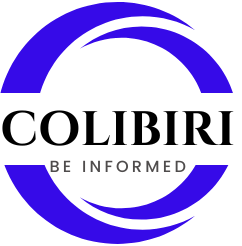Practical Steps to Automate a Business Process Using Artificial Intelligence
Artificial Intelligence (AI) doesn’t just change how companies think about technology – it fundamentally reshapes business processes. Automating a process with AI means freeing up human time, reducing errors, accelerating execution, and unlocking new performance levers.
But where to start? Below are the practical steps to follow for a successful transition toward efficient and sustainable AI-powered workflows.
🔗 This article supports the main guide: Automating Workflows with AI
- Identify the Right Processes to Automate
Not every task is suitable for AI automation. Focus on those that meet the following criteria: repetitive, predictable, structured, and resource-consuming.
For instance, HR teams can automate new hire onboarding, marketing departments might automate newsletter scheduling, and support teams can prioritize customer tickets automatically.
- Define Clear Business Objectives
Before choosing any tool or building a scenario, ask a simple question: why automate?
Are you aiming to:
- Reduce the duration of a process?
- Minimize human errors?
- Improve customer satisfaction?
- Lower operational costs?
These goals will shape all subsequent decisions – including the choice of tools and KPIs.
- Map Out the Existing Process
AI workflows should not blindly replace the current system – they must integrate intelligently.
Use diagrams or mind maps to visualize each step, the actors involved, the tools used, and friction points. This helps pinpoint exactly where automation will add the most value.
- Choose the Right Technology
AI automation relies on multiple complementary technologies:
- Natural Language Processing (NLP): for reading, understanding, or classifying texts and messages
- Machine Learning: to analyze history and make contextual decisions
- APIs: to connect software and facilitate information flow
- Low-code / no-code platforms: to let teams build workflows without technical skills
Tools that simplify this process include Levity, Bardeen, Parabola, and AirOps, which are covered in related articles.
🔗 See: Levity: Automate Business Tasks Without Coding
- Build an AI Workflow Prototype (MVP)
There’s no need to automate everything at once. Start small with a Minimum Viable Process (MVP).
Example: When a customer submits a form, the workflow automatically:
- Sends a confirmation email
- Creates a CRM entry
- Launches an analysis task powered by AI
Testing this flow gives you quick feedback before scaling further.
- Train End Users
Even the best-designed automation can fail if the teams using it aren’t trained or involved.
Be sure to explain:
- What is automated (and what isn’t)
- How to interact with AI workflows
- How to report issues or suggest improvements
AI workflows are living systems — they improve with user feedback and real-world use.
- Monitor the Right KPIs
Automation only adds value if its impact is measurable. Track these key metrics:
- Average processing time
- Number of tasks automated vs handled manually
- Error or manual intervention rate
- ROI (e.g., time or cost savings)
- Internal user satisfaction
🔗 Read next: The KPIs to Track When Evaluating AI Workflows (upcoming)
- Optimize and Iterate
Once your first automated flow is live, analyze, refine, and expand:
- Add similar processes
- Improve AI logic using training or feedback
- Connect new tools and departments
AI automation is a continuous improvement process that evolves with your organization.
